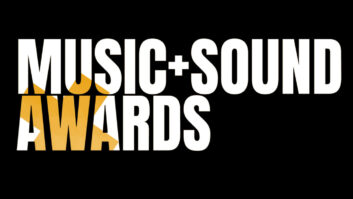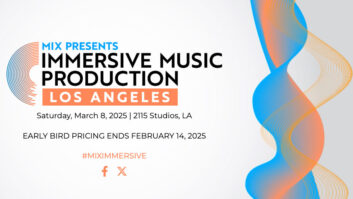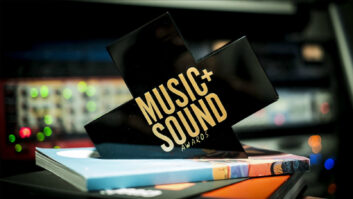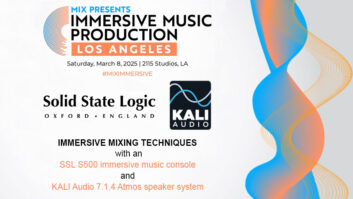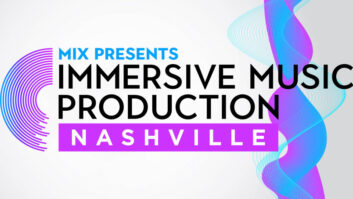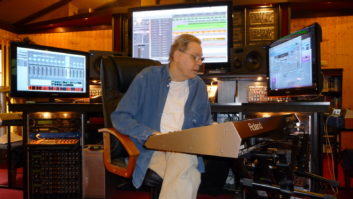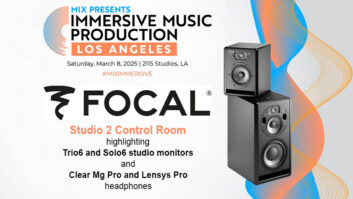Gloria Gaynor first came to the attention of dance music fans in 1975 with a string of chart hits at home and abroad, but it was her 1978 single, “I Will Survive,” initially released as a B-side, that brought her iconic status. Catapulting her into the mainstream, it went on to sell 14 million copies, topping the charts worldwide. The female empowerment anthem was honored with a Grammy Award for Best Disco Recording, and in 2016, it was added to the National Recording Registry for preservation by the Library of Congress.
With the early-’80s backlash against disco music in the United States, Gaynor moved on. She released a succession of R&B and pop records, and in 2013, a contemporary Christian album. In June 2019 she released a follow-up album, Testimony, that won a Grammy Award in January, 2020 for Best Roots Gospel Album, and was additionally nominated for Best Gospel Performance/Song for “Talkin’ ’Bout Jesus.”
Music Etc.: Family of the Year
Music Etc.: Olivia Jean, ‘Night Owl’
Respecting His Roots
Captured live to analog tape in Nashville’s RCA Studio A by Dove Award-winning producer Chris Stevens and engineer F. Reid Shippen, Testimony features Willie Weeks (bass), Drew Ramsey (guitar), Jason Webb (keyboards), Shannon Sanders (keyboards/B3) and Daru Jones (drums). Across the album, Gaynor duets with a who’s who of contemporary Christian singers, including Jason Crabb, Yolanda Adams and MercyMe’s Bart Millard. Mike Farris sang Bob Dylan’s “Man of Peace” with Gaynor, who re-wrote “Amazing Grace” for the release; they’re the only two songs she didn’t co-write. Jason Eskridge, American Idol alum Melinda Doolittle and Latrese Bush, from the Gloria Gaynor road band, provided background vocals.
The studio’s enormous tracking room enabled all the musicians, whose collective credits range from Elvis Presley and Aretha Franklin to Jonny Lang and Jack White, to play together. The result is redolent of classic soul and R&B, yet thoroughly modern in its sound, as it offers a real sense of the historic space where Dolly Parton, Charley Pride, Willie Nelson and others have recorded.
Gloria Gaynor and F. Reid Shippen joined Pro Sound News on a conference call to discuss the project.
On the choice of recording studio:
Gaynor: The purpose of doing it in RCA Studio A was for the sound there. It was wonderful being in a legendary studio where legendary artists have recorded before us. We wanted that spontaneous creativity that can only happen with live musicians working together and inspiring one another. You don’t want rehearsals for that—you can’t rehearse that.
But the singers and I had writing sessions, we had rehearsals; we were very familiar with the songs before we went into the studio, so we didn’t waste time.
The only other studio we worked in was with Yolanda. We were finished with the album, because we hadn’t been able to get Yolanda’s and my schedules to coincide. Finally, we found we were both going to be in the New York area at the same time, so Chris recorded Yolanda and me, again, remotely. I recorded at the same time as the guest vocalists in the studio in Nashville. That’s why we re-did my vocal with Yolanda, so she and I could work off one another.
Shippen: I’ve done a couple of projects there but not a ton. For a lot of the time it was on lockout. Ben Folds had it and then Dave Cobb was in there—and he works a lot. Everybody was playing in the room and having fun. It was a very lighthearted session, and everyone had a blast. I think you can hear it in the tracks. People forget [the benefit of a big room] mainly because, I guess, they don’t have the opportunity. You cut in a small, dead room, and you cut in a larger, live room, but when you get to a really big room, it kind of becomes its own isolation, because of the distances. And that’s really fun. It’s a great room. I think the only reverb I used on the album was maybe my plate, my [EMT]140. Maybe there was a spring somewhere, but we tried to keep it as old-school as possible.
It bears mentioning that a lot of these vocals were recorded by Gloria live, in a booth, with the musicians. The three background singers were standing around just one mic, so it was pretty much everybody playing together in a room.
On recording to analog tape:
Shippen: I think a lot of times for me, recording on analog, there’s an immediacy to it—and that was the point: Everyone is going for what feels great. I think we got that on this record. I’m sure there’s stuff on it that’s not technically perfect, but it all feels really good.
Gaynor: It definitely does. You can almost hear your intent with analog. For me, it makes it easier, and I find it so much more real and genuine.
On the old-school R&B vibe:
Gaynor: We all agreed that that was the way we wanted to go, because we all come from there and we know the good elements that have been lost over time in the music of today. We all agreed to bring that back and make all of that be a part of what we were doing. It has always been my philosophy in whatever business I’m doing that if I can’t do something or don’t have time or whatever, to hire people who know what they’re doing and let them do it.
On recording a gospel album:
Gaynor: This is my second gospel album, and it’s something I’ve wanted to do for many, many years. The management that I had didn’t agree—but didn’t say they didn’t agree. They were just stalling and putting it off. Now I have new management who respect me and my desires and designs for my life and career. So, finally, I get to do this.
Gloria Gaynor • www.gloriagaynor.com
